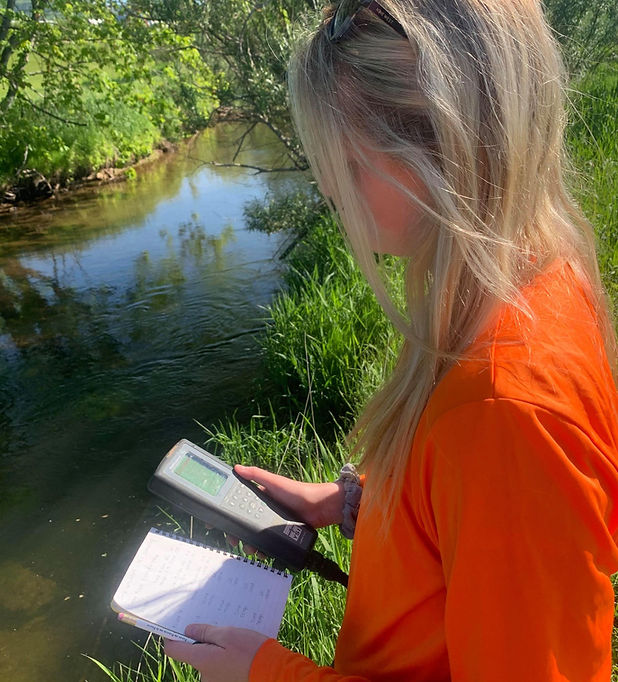
Monitoring
Monitoring is an important aspect of the work we do at the KWRC. Monitoring allows us to understand what is going on in our watershed through data collection and analysis. Through monitoring, the KWRC is able to recommend and implement management strategies to best target the issues of our watershed.
Past work: In 1994, a Habitat Assessment of the Kennebecasis Watershed was carried out in partnership with the Department of Fisheries and Oceans and the Department of Natural Resources. This assessment covered 285km of the Kennebecasis River and its major tributaries, and identified major issues facing the watershed. It also provided an indication to the more heavily impacted areas of the watershed.
With this information we researched and developed effective restoration techniques that we still continue to refine as we use them today.
Our efforts include:
1. Habitat and Riparian Zone Assessments
Present: In 2020-2021 the KWRC monitors 32 sites across our watershed. Monitoring these sites helps us understand the issues facing our watershed, and to pinpoint the areas that need the most help from the KWRC.
In the summer of 2020, the KWRC added invasive species monitoring to our repertoire of monitoring activities. With help from our partner organizations, the KWRC worked to locate the invasive plant Eurasian Water Milfoil in our watershed.
Click here to learn more about EWM.

Some temperature tracking equipment on top of a topographical map during one of our planning sessions.

In 2020 the KWRC partnered with the Hammond River Angling Association and the Belleisle Watershed Coalition to conduct an invasive species float - searching for Eurasian Water Milfoil




